Header logo
header top contact widget
LANAP
A Periodontist Can Contour Gum Tissues For A More Beautiful Smile
Posted on Nov 23, 2023 by William J. Claiborne, DDS MS
During the holidays, my wife and I attend gatherings where we occasionally meet new people. A common question, as applies to most of us, is “What do you do?” When I reply that I’m a periodontist, it is often met with a look of not knowing what a periodontist is but not wanting to appear as if that’s the case.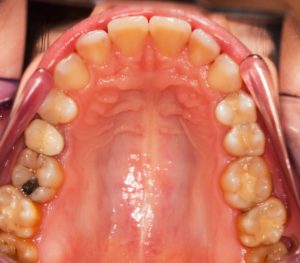
I’d like to explain what “we” are and, from a smile enhancement basis, what we can provide. I typically find that when I say “periodontal plastic surgery” it comes across as far more familiar than “performing gingivectomies.”
A periodontist is a dental specialist who has an advanced level of understanding when it comes to diseases of the oral tissues, reshaping of gum tissues and in the selection and placement of dental implants.
The American Academy of Periodontology defines a Periodontist as:
“A periodontist is a dentist who specializes in the prevention, diagnosis, and treatment of periodontal disease, and in the placement of dental implants. Periodontists are also experts in the treatment of oral inflammation. Periodontists receive extensive training in these areas, including three additional years of education beyond dental school. They are familiar with the latest techniques for diagnosing and treating periodontal disease, and are also trained in performing cosmetic periodontal procedures.”
https://www.perio.org/consumer/what-is-a-periodontist
To reach this specialty begins with educational requirements that are extensive. First, there is completion of 4 years of college (for an undergraduate degree) followed by another 4 years in dental school (for a doctorate). To specialize in Periodontics, he or she must further their education for another 3-4 years before completing the stringent requirements for specialty certification in periodontics.
The gums are rather under-rated when it comes to the tremendous role they play in both oral health and even your overall health.
Think of the gum tissues as a protective blanket in the mouth. The gums cover over the structures that support teeth and house the tissues and bone that are vital to our health. For instance, look at the base of each tooth. You’ll see that gum tissues snugly wrap around the base of each tooth. This protective seal is what prevents bacterial penetration beneath the gum line.
When oral bacteria amass to an extent that cannot be controlled by oral hygiene measures at home, they cause inflammation in the gums. In turn, the gums loosen their tight grip around teeth, which allows entry of the now-potent bacteria. These infectious bacteria have been linked to a number of problems related to a long list of serious health problems.
Oral bacteria has been found to trigger or worsen systemic conditions, including atherosclerotic vascular (heart) disease, pulmonary (respiratory) disease, diabetes, pregnancy-related complications (including preterm births), osteoporosis (bone loss), and kidney disease. A shared trait between gum disease and these medical conditions is that they are chronic conditions that take a long time to develop.
https://www.agd.org/docs/default-source/self-instruction-(gendent)/gendent_nd17_aafp_kane.pdf
It is important to be familiar with the signs and symptoms of periodontal (gum) disease, which include:
• Red, swollen or tender gums
• Bleeding while brushing, flossing, or when eating certain foods
• Gums that pull away from the teeth (recede) or make the teeth appear longer than normal
• Loose or separating teeth
• Pus pockets that form between gums and teeth
• Sores in your mouth
• Persistent bad breath
• A change in the way teeth fit together when biting
• A change in the fit of partial dentures
If you have any of these, you are urged to seek a thorough periodontal evaluation as soon as possible. This disease will only worsen without treatment. Gum disease is the nation’s leading cause of adult tooth loss.
Healthy gum tissues do more than serve in a protective role. The appearance of a smile can be greatly affected by the shape and amount of gum tissues exposed when smiling.
When a smile shows too much or too little gum tissue bordering the tops of teeth, it moves the “smile line” out of balance. For example, in a beautiful smile, the arches of gum tissues visible in a full smile flow at a similar height. These gum arches are in a complimentary line to teeth, rather than at varying levels over teeth. When the gum lime is not evenly balanced, it causes a smile to have a jumbled look.
Crown lengthening is performed to reposition the gum tissues to enhance the appearance of a smile. In addition to creating a more appealing look, crown lengthening is also performed to restore the tight seal of protection around teeth. While you enjoy the beauty of your new smile, crown lengthening gives your oral health a boost at the same time.
When the height of gum tissues that show above all teeth in a smile is too high, it is referred to as a “gummy smile.” A gummy smile is not detrimental to your oral health. However, having one does affect the appearance of a smile based on balance. For some people, it makes them “hold back” on a full smile.
This can be corrected with a gingivectomy. To begin, we numb the gum tissues and carefully trim the excess. As a Periodontist, I take specific measures to ensure a natural looking arch remains over the teeth while preserving the natural points that ‘dip’ between each tooth.
 A gingivectomy is performed in our Asheville periodontal office with a dental laser. This provides patients with a number of advantages: (1) enhanced comfort; (2) precision lines; (3) minimal or no bleeding; and, (4) faster healing time.
A gingivectomy is performed in our Asheville periodontal office with a dental laser. This provides patients with a number of advantages: (1) enhanced comfort; (2) precision lines; (3) minimal or no bleeding; and, (4) faster healing time.
In our Asheville NC periodontal office, we use the highly-advanced LANAP with PerioLase MVP 7 Laser-Assisted Attachment Procedure. This is an advanced protocol that efficiently and effectively treats advanced gum disease (periodontitis) with the added advantages of a dental laser. It is a non-surgical alternative for patients with moderate to severe periodontal disease, causes very little discomfort and has a quick recovery time. It has also been found to stimulate bone regrowth in damaged areas.
In some cases, the crown lengthening procedure can save a tooth from removal. Typically, when a tooth fractures or breaks at the gum line, it must be removed since there is not enough tooth structure to support a crown. However, a crown lengthening procedure may be able to expose more of the tooth’s structure, essentially saving the natural tooth.
For those who have avoided gum treatment due to dental fear, we offer several sedation options, including oral and IV sedation. Oral sedation is a pill that helps patients relax. It also has an amnesiac effect, leaving most with little or no memory of treatment afterward.
I.V. sedation (also known as “twilight sleep”) places the patient in a deeper sleep state and erases memory of the procedure. Here, anesthesia is overseen by a medical doctor (MD) who is a board certified Anesthesiologist. With both sedation options, patients are closely monitored with advanced safety equipment throughout treatment.
We help patients understand that their fears and concerns are not unusual. The doctors and staff of our Asheville periodontal dental office respect each patient and provide gentle, compassionate care – at every appointment.
We believe you’ll find no better periodontal dental environment in western NC. Whatever your need for the treatment of gum disease, recontouring of gum tissues, or in the placement of dental implants, call 828-274-9440 to learn more or to schedule a consultation appointment. New patients are always welcome and a referral is not required.
Laser Dentistry, Cone Beam Imaging Among Our Advanced Features!
Posted on Nov 15, 2023 by William J. Claiborne, DDS MS
Like your “adult” teeth, your gum tissues are irreplaceable. Without question, they deserve the care and attention that come with keeping them healthy and doing their job.
Gum tissues are designed to protect the structures underneath. These include bones, tooth roots, tendons, and muscles to prevent entry of harmful bacteria. Gums are designed to snugly wrap the base of each tooth to keep bacteria from penetrating sensitive root segments of teeth.
Without this protective seal around teeth, the potential for periodontal (gum) disease greatly increases. And gum disease is at concerningly high levels in the U.S. with an estimated 47% of adults having some level of gum disease.
I believe that this high level of gum disease is largely in part due to Americans not being fully familiar with the symptoms. Some are easily ignored or “brushed off” as normal. This is why it is important to be familiar with the signs and symptoms, which include:
• Red, swollen or tender gums or other pain in your mouth
• Bleeding while brushing, flossing, or when eating certain foods
• Gums that pulling away from the base of teeth, making them appear teeth longer
• Loose or separating teeth
• Pus between your gums and teeth
• Sores in your mouth
• Persistent bad breath
• A change in the way your teeth fit together when biting
• A change in the fit of partial dentures
If you are experiencing any of these symptoms, you are urged to seek care with a periodontal specialist as soon as possible. This disease will only worsen without treatment.
Why should you be concerned about periodontal disease?
Gum disease is the nation’s leading cause of adult tooth loss. Additionally, research has linked the bacteria of periodontitis with serious health problems. These include heart disease, stroke, arthritis, diabetes, some cancers, preterm babies, erectile dysfunction (ED) and high blood pressure. Studies on links to Alzheimer’s disease are showing concerning correlations.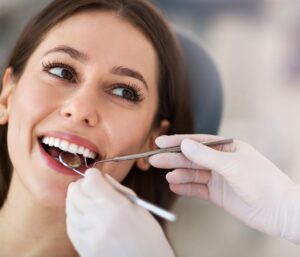
A periodontist is an expert in the treatment of all stages of gum disease, including gingivitis, periodontal disease, and the advanced form of periodontitis.
In addition to having these specific skills, I’d like to share the benefits of some of our amazing technology we make available to our Western NC patients. One with a wide range of benefits to patient care is our Dental Laser.
Nd: YAG Dental Laser: This is a small, hand-held device that eliminates or greatly minimizes bleeding during procedures. It also reduces numbing requirements, removes bacteria and easily uncovers gum tissue where dental implants have been placed.
Additionally, laser dentistry can quickly repair oral ulcers and beautifully re-contours or repairs gum tissue with a precision line. Some specific treatments that are ideal for a dental laser include:
Canker & Cold Sores: The laser is also ideal for rapid healing of canker and cold sores. Laser therapy can halt the progression of canker sores, reducing the pain in a day or so. Otherwise, they can last up to 2 weeks. When it comes to cold sores, they are best treated with our laser when the very first symptom arises. Tingling or burning sensation is the first sign that a cold sore is about to erupt. Although lasers can still treat these lesions in later stages, the treatment is most effective in initial stages. Most patients notice significant improvement in comfort after laser treatment with a much shorter duration.
Gum Disease Treatment: In our office, we also use a dental laser to destroy the bacteria of gum disease. This technology also speeds the process and heightens your comfort, saving you treatment time with faster healing.
Correcting a “Gummy Smile”: This is when a smile shows too much gum tissue above upper teeth when smiling fully. We correct this in a procedure known as crown lengthening. In this, a gingivectomy adjusts the height of gum tissues so the smile has a more even smile line. This may involve the use of a dental laser, which provides a precision line and speeds healing.
Balancing a smile line: A gingivectomy is also advised to rebalance the frame of gum tissues that arch the teeth visible in a smile. When one or two teeth have different heights of gum tissue, the smile has a jumbled look. A dental laser can even out the smile line and enhance the beauty of a smile.
Saving a tooth broken near the gum line: When a tooth breaks at or near the gum line, it often requires removal. In some cases, however, we can save the tooth by exposing enough of the structure to receive a crown. This helps the patient to avoid removal and thereby preserves the supporting jaw bone.
In our Asheville NC periodontal dental office, we feature additional technologies, some of the most advanced in the industry. These include:
LANAP Protocol Using PerioLase MVP-7: This process is designed to efficiently and effectively treat periodontitis (advanced gum disease) through laser technology. Treatment is administered with minimal (or no) discomfort and recovery time is minimal. Amazingly, this technology has also been able to stimulate bone regrowth in damaged areas.
Cone Beam 3D Imaging: These views allow us to see your jaw in 3D dimensions and to be able to view it at varying angles. This enables us to see what used to be hidden from view.
Cone Beam images are often used to assess:
• Dental Implant Positions
• Temporomandibular Joints (TMJ)
• Airway Passages
• Bone Structure Damage or Bone Loss
• Teeth, Tooth Roots and Facial Structures
• Signs Of Infections, Cysts, Or Tumors
CS 3600 Intraoral Scanner: Through this process, our patient no longer have impressions made with bulky, goopy trays held in their mouths. This technology quickly and comfortably scans the mouth’s interior for digital impressions using a small, handheld scanner. It can also reach difficult–to–access areas in the patient’s mouth with improved patient comfort.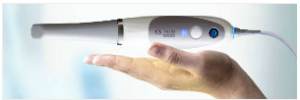
Simplant Dental Software for Computerized Dental Implant Placement: This system helps in pre-surgical positioning of dental implants on the computer, using a 3D model of the patient’s jaw. This aids in the selection of the implant type to ensure a precision fit.
Intraoral Camera Technology: This provides outstanding quality of images within the mouth. These images are sent to screen for a clear, crisp view so we can confer with patients on specific treatment needs.
Computer Imaging In Treatment Suites: Treatment suites are equipped with computers for convenient image sharing with patients.
Oral & IV Sedation: We take patient comfort very seriously in our Asheville periodontal dental office. That’s a commitment we make to every patient at every appointment. Here, patient comfort is supported by our sedation options. These include oral and I.V. sedation. Also referred to as “twilight sleep” or “sleep dentistry,” these sedatives are administered by a highly-skilled anesthesiologist who uses advanced safety monitoring equipment throughout the patient’s procedure.
My staff and I also take great pride in providing patients with an environment of respect. Some adults come to us embarrassed by the condition of their oral health or missing teeth. Here, we strive to make patients feel they are in the right hands in the right place.
If tooth loss has occurred, a periodontist also specializes in the selection and placement of all types of dental implants. Dental implants, for many reasons, are the preferred option for tooth replacement.
Call 828-274-9440 to schedule a consultation in our state-of-the-art Asheville periodontal dental office. New patients are always welcome and a referral is not always necessary.
Common Contributors to Tooth Loss
Posted on Sep 11, 2023 by William J. Claiborne, DDS MS
Our natural teeth seem hard and solid, able to endure much over the span of a lifetime. However, as we all know, teeth can be knocked out due to accidents or injury and lost due to becoming overly decayed, fractured, infected and – the leading cause – periodontal (gum) disease.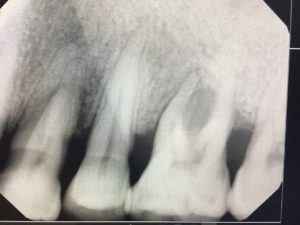
Your gum tissues serve as protection for the tooth structures you cannot see – the tooth roots and bone and tissues supporting the roots. And, teeth need these bone structures to stay healthy and vice versa; the bone structures beneath the gums need the presence of the roots to stay healthy.
The jaw bones are kept healthy by tooth roots that provide stimulation to the bone as well as nourishment that runs through the tooth’s interior.
When a tooth is removed, so is the stimulation and nourishment to that area of the jaw bone. Without it, the bone begins to shrink. As it declines in height, adjacent teeth are more vulnerable to loss. Statistics show that teeth adjacent to areas where natural teeth are missing will be the most likely to be lost next.
According to the Center for Disease Control & Prevention (CDC), 69% of adults between ages 35 – 44 have lost at least one permanent tooth. By age 50, Americans are missing an average of 12 teeth. For adults between the ages of 65 – 74, 26% are missing all of their natural teeth. That’s over one-fourth of the adult population over age 65.
Because of the strength and seemingly rock-solid presence of teeth, it may be assumed they’ll last for a lifetime. And, they can. Natural teeth can and should last a lifetime with proper maintenance and care. However, certain things can contribute to tooth loss; some of these may not be well known.
These include:
GUM DISEASE – Signs and symptoms of gum disease are:
• Red, swollen or tender gums
• Seeing blood in the sink when brushing
• Receded gums
• Loose or separating teeth
• Pus pockets on gum tissues
• Sores in the mouth
• Persistent bad breath
When these indications exist, it is important to seek periodontal treatment as soon as possible. Gum disease only worsens without treatment, requiring more time and expense to rid this serious, even deadly, inflammatory disease.
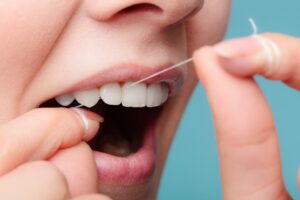 NOT FLOSSING – While tooth brushing helps to keep oral bacteria levels in the mouth to manageable levels, daily flossing is also recommended as a preventative way to keep cavities and gum disease at bay. Still, 70% of the American adult population do not floss daily. Even worse, about a third of Americans admit to never flossing (39% of men and 27% of women who do not).
NOT FLOSSING – While tooth brushing helps to keep oral bacteria levels in the mouth to manageable levels, daily flossing is also recommended as a preventative way to keep cavities and gum disease at bay. Still, 70% of the American adult population do not floss daily. Even worse, about a third of Americans admit to never flossing (39% of men and 27% of women who do not).
SMOKING – According to the Centers for Disease Control & Prevention (CDC), a smoker has twice the risk for gum disease compared with that of a nonsmoker. (https://www.cdc.gov/tobacco/campaign/tips/diseases/periodontal-gum-disease.html)
AGING – With age, the body becomes less efficient in maintaining itself. Due to hormone changes and being less hydrated, joints wear down, skin loses subtlety and muscle mass and strength declines. The same is true with teeth, especially as gum tissues dry out. This means their tight, protective grip around the base of teeth loosens and pockets can easily for between teeth. All these factors contributor to higher risks of gum disease and tooth loss.
ORAL DRYNESS – The tissues inside the mouth need to be kept moist. Saliva flow is designed to do this. However, with age, the flow of saliva is less plentiful. Just as the skin and hair get drier with age, the mouth endures this same consequence. When saliva flow is less efficient at rinsing bacteria from the oral cavity (inside of the mouth), bacteria grow at a more rapid rate. This means bacteria accumulation occurs more frequently than twice-a-day brushing can control.
MEDICATIONS – The average adult in the 65-79 age group has over 27 prescriptions filled each year. (https://www.statista.com/statistics/315476/prescriptions-in-us-per-capita-by-age-group/). Many meds have the side effect of oral dryness or increased bleeding, including some herbal supplements. For example, Ginkgo Biloba and Vitamin E can act as blood thinners. When combined with aspirin, the combination may cause difficulties in blood clotting.
To halt the potential for tooth loss if you are already missing teeth, dental implants are recommended. They actually protect the health of neighboring teeth. In addition to helping the supportive bone structures retain bone mass, teeth supported by implants do not rely on the support of crowned (or ‘capped’) teeth on both sides. This means the integrity of adjacent teeth is preserved.
Dental implants come in over 40 different types designed to accommodate various challenges and preferences. This is one reason (of many) that a periodontist is an ideal choice for the diagnosis and placement of your implants. Our speciality understands the complete spectrum of implant systems. While some implant systems may be ideal for your needs, others may not. And, the choice of which will achieve your goals is not limited to just those types a non-specialist knows how to place.
For example, some dental implants provide you with a non-removable (“fixed”) option while others may involve removable teeth. Additionally, the proper selection of your dental implants may greatly save you in treatment fees.
For example, the All-On-4 dental implant system needs only 4 implants per arch, and can be placed in shallow bone. The treatment fees are less since the number of implants is low and the need for bone regeneration for severe bone loss may not be required. For these reasons, a periodontist may be able to help you achieve your tooth replacement goals within a budget you can manage.
Our Western NC periodontal dental office features some of the industry’s most advanced technology, which helps to optimize success rates, shorten treatment time, and enhance comfort. This includes 3-D Cone Beam imaging, which is ideal for diagnoses and treatment planning. These amazing images provide a clear view of the upper and lower jaw (including nerve canals) in a process that is quick, painless and at minimal radiation levels.
We also have a computerized Dental Implant Placement system for pre-surgical positioning of dental implants. Using a 3D model of the patient’s jaw, a template is developed for the most conservative treatment process needed, even for complex cases. This minimizes disruption of gum tissues and targets implant placement at ideal depths and angles.
Because we make patient comfort one of our highest priorities, we offer several sedation options, including oral and IV sedation. Oral sedation is a pill that helps patients relax. It also has an amnesiac effect, leaving most with little or no memory of treatment afterward. I.V. sedation (also known as “twilight sleep”) places the patient in a deeper sleep state and erases memory of the procedure. It is administered by a Medical Doctor (MD) who is a board certified Anesthesiologist.
If you have lost teeth (or struggle with a denture or partial) and are considering dental implants, begin with a consultation appointment. Call 828-274-9440. New patients are always welcome.
Amazing Technology In Treating Gum Disease
Posted on May 09, 2023 by William J. Claiborne, DDS MS
Recently, an episode of the CBS News’ television program “60 Minutes” provided an in-depth update on the development of prosthetic limbs. Now “robotic” in description, advancements are making it possible for people with spinal cord injuries and amputations to control prosthetic limbs with their minds, including grasping objects.
What is miraculous, however, is how these advanced prosthetics can also restore a sense of touch to their brains. The decades-long project is due in most part to the Defense Department.
https://www.gao.gov/products/gao-22-106118
Technology today is remarkable. Advancements are moving forward at an impressively accelerating pace. We are witnesses to the the repair and rejuvenation of bodily parts in almost a “good as new” state. This is also true in the area of dental technology.
A periodontist is often a “behind the scenes” dental specialist, working with general dentists and various other dental specialists. While periodontists may be in the background, they stay busy. In addition to treating all stages of gum disease, these specialists have advanced skills in the placement of dental implants.
It is estimated that over 47% of American adults have some level of periodontal (gum) disease. This disease is the nation’s number one cause of adult tooth loss. However, gum health needs to be seen by the general population as a vital player in one’s overall health.
The destruction of periodontal disease is not just confined to the mouth. It spreads. Gum disease destroys bone structures below the gums. These structures are the upper and lower jaw bones, which support natural tooth roots.
The jaw bones are actually kept healthy by the presence of tooth roots. These roots provide stimulation to the bone as well as nourishment that feeds through the tooth’s interior.
By holding their roots securely, the jaw bones provide natural teeth with a sturdy foundation. This enables the ability to bite and chew comfortably and dependably.
However, when a natural tooth is lost, so is the stimulation and nourishment to that area of the jaw bone. Without it, the bone begins to shrink. As it declines in mass, the adjacent teeth are more vulnerable to loss. Statistics show that teeth adjacent to areas where natural teeth are missing will be the most likely to be lost next. This creates somewhat of a domino effect.
Dental implants were designed to recreate the presence of natural teeth both above and below the gum line. Because teeth attached to dental implants are supported by the jaw bones, the study foundation as was had by natural teeth is restored, along with the ability to bite and chew without movement or embarrassment when dentures (or partials) slip.
In addition to tooth loss, gum disease is a serious health threat. Although people are often aware of the issues that come with wearing dentures and partial, many are not familiar with the health problems associated with gum disease bacteria.
This infectious bacteria of gum disease are capable of causing inflammatory reactions elsewhere in the body. Systemic inflammation is the now-known epicenter of a number of major health problems, including heart disease, stroke, high blood pressure, diabetes, arthritis, impotency and more.
Whether the patient’s need is the restoration of gum health or the replacement of missing teeth, the advanced skills of a periodontist can be highly advantageous. Through their unique understanding, they can help to minimize treatment time and complexity of treatment.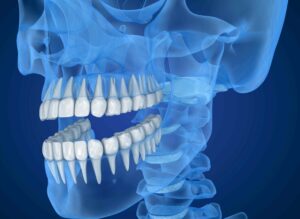
In our Asheville NC periodontal dental office, we feature some of the most advanced imaging and computerized technology available in the industry. These include:
LANAP Protocol Using PerioLase MVP-7: Efficiently and effectively treats periodontitis (advanced gum disease) with laser technology. It causes very little discomfort and has a quick recovery time. This has also been found to stimulate bone regrowth in damaged areas.
Dental Radiology With 3-D Cone Beam Technology: This imaging is ideal for diagnosis and treatment planning. The imaging covers the entire dentition area with clear views of the mandible and maxilla (upper and lower jaw).
CareStream Cone Beam Computer Tomography Imaging: This computerized tomography provides imaging in exceptional detail and range.
CS 3600 intraoral scanner: Patients no longer have to endure having impressions made with bulky, gloopy trays held in their mouths! This quickly and comfortably scans the mouth’s interior for digital impressions using a small, handheld scanner. It can also reach difficult–to–access areas in the patient’s mouth with improved patient comfort.
Simplant Dental Software for Computerized Dental Implant Placement: This system helps in pre-surgical positioning of dental implants on the computer, using a 3D model of the patient’s jaw. This aids in the selection of the implant type that ensures a precision fit.
Intraoral Camera Technology: This provides outstanding quality of images within the mouth. These images are sent to screen for a clear, crisp view so we can confer with patients on specific treatment issues.
Computer Imaging In Treatment Suites: Treatment suites are equipped with computers for convenient image sharing with patients.
Advanced Sterilization: Our custom sterilization unit adheres to (or exceeds) CDC guidelines for instrument processing protocols, particularly in the cleaning of instruments.
Fully-Equipped Surgical Suites: Relax during treatment while surrounded by beautiful mountain views of Asheville.
My staff and I also take great pride in providing patients with optimal comfort, along with an environment of respect. Some adults comes to us embarrassed by the condition of their oral health or missing teeth. Here, we strive to make patients feel they are not only in the right hands, but they are in the right place.
Comfort is supported by our sedation options. These include oral and I.V. sedation. Also referred to as “twilight sleep” or “sleep dentistry,” these sedatives are administered by skilled professionals who utilize advanced safety monitoring equipment.
I believe that the rampant number of people who have gum disease in the U.S. is largely in part due to being unaware of the symptoms. Some are easily ignored or “brushed off” as normal.
This is why it is important to be familiar with the signs and symptoms, which include:
• Red, swollen or tender gums or other pain in your mouth
• Bleeding while brushing, flossing, or when eating certain foods
• Gums that are receding (pulling away from the teeth) or make the appear teeth longer than normal
• Loose or separating teeth
• Pus between your gums and teeth
• Sores in your mouth
• Persistent bad breath
• A change in the way your teeth fit together when you bite
• A change in the fit of partial dentures
If you have any of these, you are urged to seek periodontal care as soon as possible. This disease will only worsen without treatment.
Call 828-274-9440 to schedule a consultation in our state-of-the-art Asheville periodontal dental office.
Recent Posts
Categories
Archives
- September 2024
- August 2024
- July 2024
- June 2024
- May 2024
- April 2024
- March 2024
- February 2024
- January 2024
- December 2023
- November 2023
- October 2023
- September 2023
- August 2023
- July 2023
- June 2023
- May 2023
- April 2023
- March 2023
- February 2023
- January 2023
- December 2022
- November 2022
- October 2022
- September 2022
- August 2022
- July 2022
- June 2022
- May 2022
- April 2022
- March 2022
- February 2022
- January 2022
- December 2021
- November 2021
- October 2021
- September 2021
- August 2021
- July 2021
- June 2021
- May 2021
- April 2021
- March 2021
- February 2021
- January 2021
- December 2020
- November 2020
- October 2020
- September 2020
- August 2020
- July 2020
- June 2020
- May 2020
- April 2020
- March 2020
- February 2020
- January 2020
- December 2019
- November 2019
- October 2019
- September 2019
- August 2019
- July 2019
- June 2019
- May 2019
- April 2019
- March 2019
- February 2019
- January 2019
- December 2018
- November 2018
- October 2018
- September 2018
- August 2018
- July 2018
- June 2018
- May 2018
- April 2018
- March 2018
- February 2018
- January 2018
- December 2017
- November 2017
- October 2017
- September 2017
- August 2017
- July 2017
- June 2017
- May 2017
- April 2017
- March 2017
- February 2017
- January 2017
- December 2016
- November 2016
- October 2016
- September 2016
- August 2016
- July 2016
- June 2016
- May 2016
- April 2016
- March 2016
- February 2016
- January 2016
- December 2015
- November 2015
- October 2015
- September 2015
- August 2015
- July 2015
- June 2015
- May 2015
- April 2015
- March 2015
- February 2015
- January 2015
- December 2014
- November 2014
- October 2014
- September 2014
- August 2014
- July 2014
- June 2014
- May 2014
- April 2014
- March 2014
- February 2014
- January 2014
- December 2013
- November 2013
- October 2013
- September 2013
- August 2013
- July 2013
- June 2013
- May 2013
- April 2013
- March 2013
- February 2013
- January 2013
- December 2012
- November 2012
- October 2012
- September 2012
- August 2012
- July 2012
- June 2012


